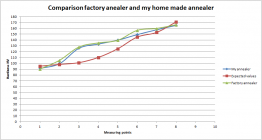Thank you Gina. I looked up proximity effects before I sent my note to you and I couldn’t find anything definitive - so it dawned on me that you might have some personal experience on this. Thank you. I plan to have clearances far greater than 2-inches in any case so I appreciate the reassuranceFrank....
This is just a guess, but I would say 2" from the outside diameter of the induction coil. Few years ago I had one builder run the coil through a metal front front plate, using rubber grommets to guide and insulate through the plate. Problem was the grommets were only 1/4" wide. Front panel got hot and the coil was not receiving full energy. Cut larger holes and replaced them with 2" grommets. All OK after that.
Hope this helps
Gina
Frank












